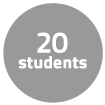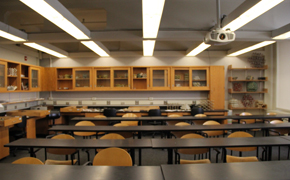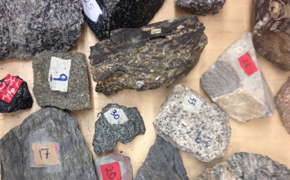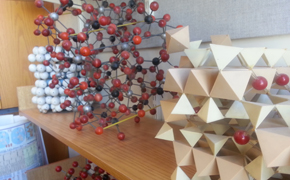Instructor Insights pages are part of the OCW Educator initiative, which seeks to enhance the value of OCW for educators.
Course Overview
This page focuses on the course 12.001 Introduction to Geology as it was taught by Profs. Taylor Perron and Oliver Jagoutz in Fall 2013.
This course introduces students to the basics of geology through lectures, laboratory exercises, and one weekend field trip. Topics ranging from mineral and rock identification to the origin of the continents, from geologic mapping to plate tectonics, and from erosion by rivers and glaciers to the history of life are explored.
Course Outcomes
Course Goals for Students
- Understand and apply basic principles of geology
- Gain hands-on experience with rocks, minerals, and field observations
- Develop an awareness of the societal relevance of Earth Science
Possibilities for Further Study
After this course, students may be interested in an undergraduate major or minor in Earth, Atmospheric and Planetry Sciences.
This course is complementary to 12.002 Physics and Chemistry of the Terrestrial Planets and 12.003 Atmosphere, Ocean, and Climate Dynamics.
In the following pages, Prof. Taylor Perron describes various aspects of how he teaches 12.001 Introduction to Geology.
- Co-Teaching
- Planning a Good Field Trip
- Conveying the Social Relevance of Geology
- Making Sense of Messiness
Curriculum Information
Prerequisites
The course is designed to be accessible to students from all disciplines. No geology background is assumed.
Requirements Satisfied
- REST

- Required course for undergraduates majoring in Earth, Atmospheric, and Planetary Science
- Core subject for students minoring in Earth, Atmospheric, and Planetary Science
- Required course for undergraduates in the Program in Archaeology and Materials in the Department of Materials Science and Engineering
Offered
Every fall semester. (Prior to Fall 2012, this course was offered every spring semester.)
Assessment
The students' grades were based on the following activities:
 60% Field trip report, lab reports, and exercises
60% Field trip report, lab reports, and exercises 35% Quizzes
35% Quizzes 5% Class participation
5% Class participationAssessment Note
Reports were evaluated on clarity of presentation as well as soundness of analysis.
Student Information

Enrollment
Enrollment varies between 15 and 30 students each year.
Breakdown by Year
This course is taken by a combination of sophomores, juniors, and seniors.
Breakdown by Major
½ majors in Earth, Atmospheric, and Planetary Sciences and ½ majors in other departments
During an average week, students were expected to spend 12 hours on the course, roughly divided as follows:
Lecture
- Typically met three times a week for one hour per session; 31 sessions total.
- Lecture by one of the two faculty instructors supplemented with slides and blackboard demonstrations.
- Student participation was encouraged and included in the students’ final grades.
Recitation
- Typically met three times a week for one hour per session immediately after lecture; 26 sessions total.
- A short introduction by the faculty or teaching assistant, followed by a hands-on activity and/or group work related to the lecture.
Out of Class
- Finish lab reports and exercises that were begun during the lab.
- Study for quizzes.
- Participate in the weekend field trip and complete the field trip report.
Semester Breakdown
| WEEK | M | T | W | Th | F |
|---|---|---|---|---|---|
| 1 |  |  |  |  |  |
| 2 |  |  |  |  |  |
| 3 |  |  |  |  |  |
| 4 |  |  |  |  |  |
| 5 |  |  |  |  |  |
| 6 |  |  |  |  |  |
| 7 |  |  |  |  |  |
| 8 |  |  |  |  |  |
| 9 |  |  |  |  |  |
| 10 |  |  |  |  |  |
| 11 |  |  |  |  |  |
| 12 |  |  |  |  |  |
| 13 |  |  |  |  |  |
| 14 |  |  |  |  |  |
| 15 |  |  |  |  |  |
| 16 |  |  |  |  |  |
 No classes throughout MIT
No classes throughout MIT Lecture session
Lecture session Weekend field trip
Weekend field trip Lab tour in EAPS department
Lab tour in EAPS department No class session scheduled
No class session scheduled Lab session
Lab session Quiz
QuizLead Co-instructors (Prof. Taylor Perron & Prof. Oliver Jagoutz)
Develop the course lectures, labs, exercises, and weekend field trip.
Teaching Assistant—Graduate Student in EAPS department
- Lead the labs and exercise sessions
- Grade the lab reports and exercises
- Handle the logistical preparations of the field trip
- Support the faculty and students on the weekend field trip
Teaching Assistant—Undergraduate Student in EAPS department
- Assist students during the labs and exercise sessions
- Grade the lab reports and exercises
- Support the faculty and students on the weekend field trip


 Room 1 of 3
Room 1 of 3 

